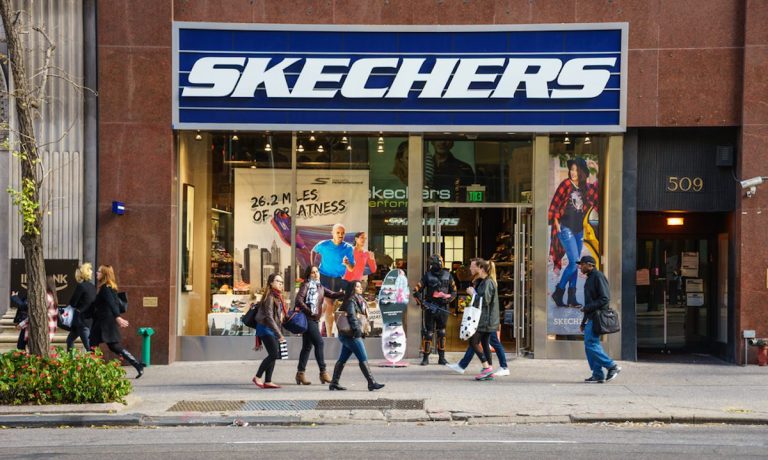Skechers ‘Cautiously Optimistic’ About Back-To-School As Sales Accelerate

Despite beating internal and Wall Street expectations in the second quarter, Skechers is emphasizing that the COVID-19 pandemic is not over and that the situation remains fluid, even while projecting continued demand through the rest of the year.
Officially, Skechers said its second-quarter sales rose to $1.7 billion, a 127 percent year-over-year increase and a 32 percent increase versus 2019. Domestic wholesale more than tripled compared to 2020, while international wholesale jumped 95 percent and direct-to-consumer (D2C) grew 138 percent.
Chief Operating Officer David Weinberg attributed this growth to consumers’ return to more normal lifestyles in many markets, which fueled demand for Skechers’ comfort technology products. “We believe people are embracing a more relaxed lifestyle and want to incorporate comfort into their work and weekend wear,” he told investors and analysts on a conference call.
Weinberg added, though, that the pandemic continues to be a global challenge for the company, with lockdown restrictions, temporary closures and reduced store operating hours impacting sales and supply chain issues slowing the import of products.
Even with back-to-school shopping, which is already underway, Weinberg said Skechers is “cautiously optimistic,” given that sales are highly dependent on how schools and school districts behave. “We, I think, have planned for a reasonable recurrence of back-to-school, similar to what we saw pre-pandemic, but probably not a full-throttle return at this juncture,” he said.
Weinberg tamped down concerns from some analysts that demand for Skechers won’t hold as the pandemic recovery possibly brings a return to more formal footwear, with the COO pointing to the fact that the company sells more than just sneakers.
Chief Financial Officer John Vandemore said Skechers is also capitalizing on consumers’ recent focus on health. “Being comfortable is part of being healthy, and you certainly can’t argue against the trend of focusing on health and well-being,” he said, noting that a pair of Skechers dress shoes he owns is one of his most comfortable pairs. “So it’s not just limited just to our core causal and athletic. We infuse that technology across the product portfolio.”
International Pursuits
International sales comprised 56 percent of Skechers’ total sales in the second quarter, led by increases in China and Europe. In China, sales grew 51 percent year over year and 68 percent versus 2019, while in Europe, sales grew 150 percent compared to last year and 85 percent compared to two years ago.
Overall, the company’s international business grew by 114 percent year over year and by over 30 percent compared to 2019. Comparable store sales were up 165 percent compared to 2020, but down 9 percent versus two years ago because of ongoing store closures and limited hours. Still, international D2C sales increased 259 percent over the past year and 20 percent over 2019, making up some of that difference.
As international sales continue to grow, Weinberg noted that the company is working on new distribution centers in Peru, the U.K. and Japan, and is currently looking for a location in India. Skechers also recently completed a 1.5 million-square-foot distribution center in China, which is fully operational as of this month.
Capital expenditures, which included investments in new distribution centers and D2C capabilities around the world, totaled $62 million in the second quarter. For the remainder of the year, Skechers expects to spend up to $200 million to support its growth.
“Our capital investments remain focused on supporting our strategic growth priorities: growing our direct-to-consumer business as well as expanding the presence of our brand internationally,” Vandemore said.
Looking Ahead
Skechers told analysts that it expects third-quarter sales to be approximately $1.6 billion; for the full year, sales are expected to be about $6.2 billion.
“We believe our momentum will continue in the back half of the year and into next year,” Weinberg said, with Vandemore noting that the second-half guidance is “heavily influenced” by D2C sales so far this year. “That’s been a very big wind at our backs, and we expect that to continue,” Vandemore said.